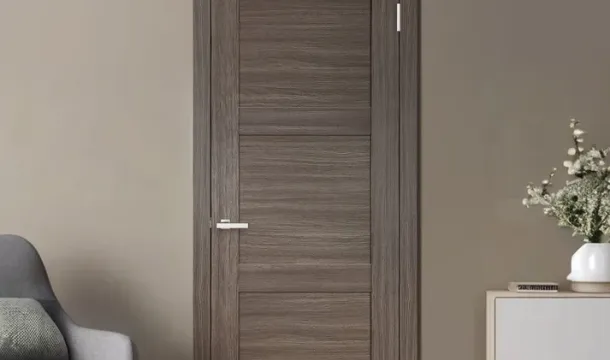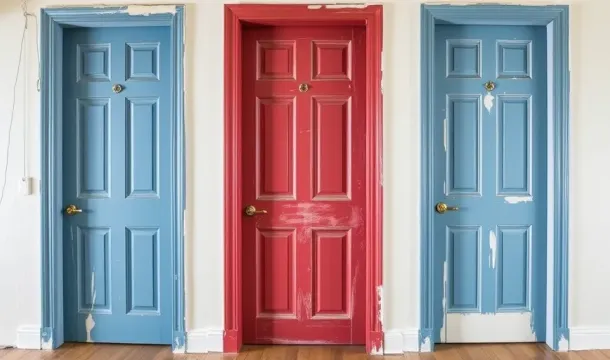Fire Codes and Interior Door Safety Standards in Canada
Popular Articles
Ensure your residence complies with fire regulations by installing certified doors that meet local protection protocols. These specifications dictate the materials and design necessary to withstand flames, smoke, and heat, significantly enhancing safety within your home.
Consult your municipal guidelines for the latest regulations regarding door installation. Adhering to these directives not only protects occupants but also minimizes property damage during emergencies. It is crucial to select products that bear appropriate certification marks, verifying their compliance with established benchmarks.
Regularly inspect existing doors for signs of wear or damage that could compromise their effectiveness in an emergency. Prioritize maintaining a clear path to exits and ensure all doors function properly under stress. By focusing on these aspects, homeowners can effectively reduce risks associated with fire incidents.
Understanding Fire Code Basics
Compliance with local legislation is paramount. Ensure that all entry points meet specified regulations regarding resistance to flames and heat transfer. This includes selecting appropriate materials and finishes designed to contain hazards effectively.
For residential structures, the most common requirements include:
The selection of suitable materials can significantly impact safety outcomes. Common options include mineral core variants or solid wood, each offering varying levels of protection against combustion and transmission of heat.
Furthermore, adherence to provincial amendments is necessary. Each region may implement specific alterations tailored to local conditions or risks. Always consult the latest version of relevant documents for your area.
Your approach should encompass both preventive measures and response strategies in the event of an emergency, ensuring a comprehensive framework for protection and peace of mind within any environment.
Requirements for Interior Doors
To ensure optimal protection within residential spaces, doors must meet specific criteria. Use materials that are rated for fire resistance, typically providing at least 20 minutes of protection. Check for compliance with local regulations regarding thermal performance and smoke control.
Select doors equipped with a solid core or those manufactured from fire-rated materials. Ensure that they have appropriate seals to prevent smoke infiltration during emergencies. Hardware, including hinges and locks, should also be compliant with safety benchmarks.
Installation plays a critical role; frames need to be adequately fitted to minimize gaps that could compromise safety. Regular maintenance checks will help identify any wear or damage that may affect the door's performance in emergency situations.
It is advisable to keep interior doors closed when not in use to enhance containment during a fire event. Signage indicating door functions and clear paths of egress should be visible, contributing to overall preparedness within the home.
Testing and Certification Processes
To ensure optimal protection for residences, testing and certification of products must adhere to rigorous regulations. These processes assess how well a barrier can withstand exposure to flames and heat. Manufacturers should seek approval from recognized entities that conduct these evaluations according to established metrics.
For doors, specific tests simulate real-world scenarios, determining performance under various conditions. Key parameters include resistance to combustion, temperature rise, and structural integrity over time. Compliance with these evaluations indicates that the product meets necessary criteria for residential use.
Certification marks from accredited organizations serve as proof of adherence to safety measures. Homeowners should look for these symbols when selecting barriers, ensuring their choices align with legal requirements. Regular inspections and re-evaluations can further guarantee ongoing compliance throughout the product's lifecycle.
In addition to initial assessments, continuous monitoring of materials used in construction is vital. This involves checking for changes in composition or manufacturing processes that could affect overall performance. Maintaining updated certifications ensures that any new regulations are met, providing peace of mind for residents regarding their home’s security against hazards.
Ultimately, engaging with qualified professionals during selection and installation will enhance safety outcomes. Knowledgeable contractors can provide insights on suitable options while adhering to local guidelines and practices.
Common Compliance Issues
Ensure the following elements are addressed to meet regulations effectively:
- Material Selection: Verify that materials used for partitions and barriers comply with specified fire-resistance ratings. Non-compliant materials can lead to significant vulnerabilities.
- Installation Practices: Proper installation is critical. Misalignment or improper sealing around frames can compromise protective features, allowing smoke and flames to penetrate living spaces.
- Labeling Requirements: All closures must display appropriate labels indicating their fire resistance duration. Failure to have visible labels can result in non-compliance during inspections.
- Maintenance Procedures: Regular checks on mechanisms and seals are necessary. Wear and tear or damage can diminish performance, leading to safety risks.
- Avoiding Modifications: Alterations made after initial installation often violate standards. Any adjustments should be reviewed for compliance with relevant regulations.
- Documentation Accuracy: Ensure all documentation regarding testing and certifications is current and accessible. Incomplete records can hinder compliance verification.
Tackle these common issues proactively to enhance protection and ensure adherence to local regulations governing residential structures.
Impact of Local Regulations
Adhere to municipal guidelines to ensure compliance with local requirements regarding safety measures in residential structures. Specific municipalities may enforce stricter protocols than provincial mandates, affecting how materials and products are utilized within homes.
Verify if your community has adopted amendments or unique provisions that influence the installation and performance expectations for barriers. These can include specifications on the minimum fire resistance ratings of materials used for partitions and access points.
Consult local building authorities to obtain updated information on regulations, as they may periodically revise codes based on new research findings or after significant incidents. Engaging with these officials can provide clarity on any additional certifications required for residential projects.
Stay informed about potential changes in insurance policies that might arise from local regulatory shifts. Some insurers may adjust coverage terms depending on compliance with regional norms, impacting overall liability and risk management strategies.
Consider participating in workshops or seminars hosted by local authorities focusing on best practices for construction and renovation projects. Such events often feature experts discussing recent developments in regulations and practical applications relevant to maintaining home security against hazards.
Incorporate feedback from inspections into future plans to enhance adherence to evolving requirements. This proactive approach can minimize risks associated with non-compliance during future assessments or when selling a property.
Popular Articles

Choosing the Perfect Interior Doors for Your Canadian Home

A Complete Guide to Choosing Interior Doors for Canadian Homes
